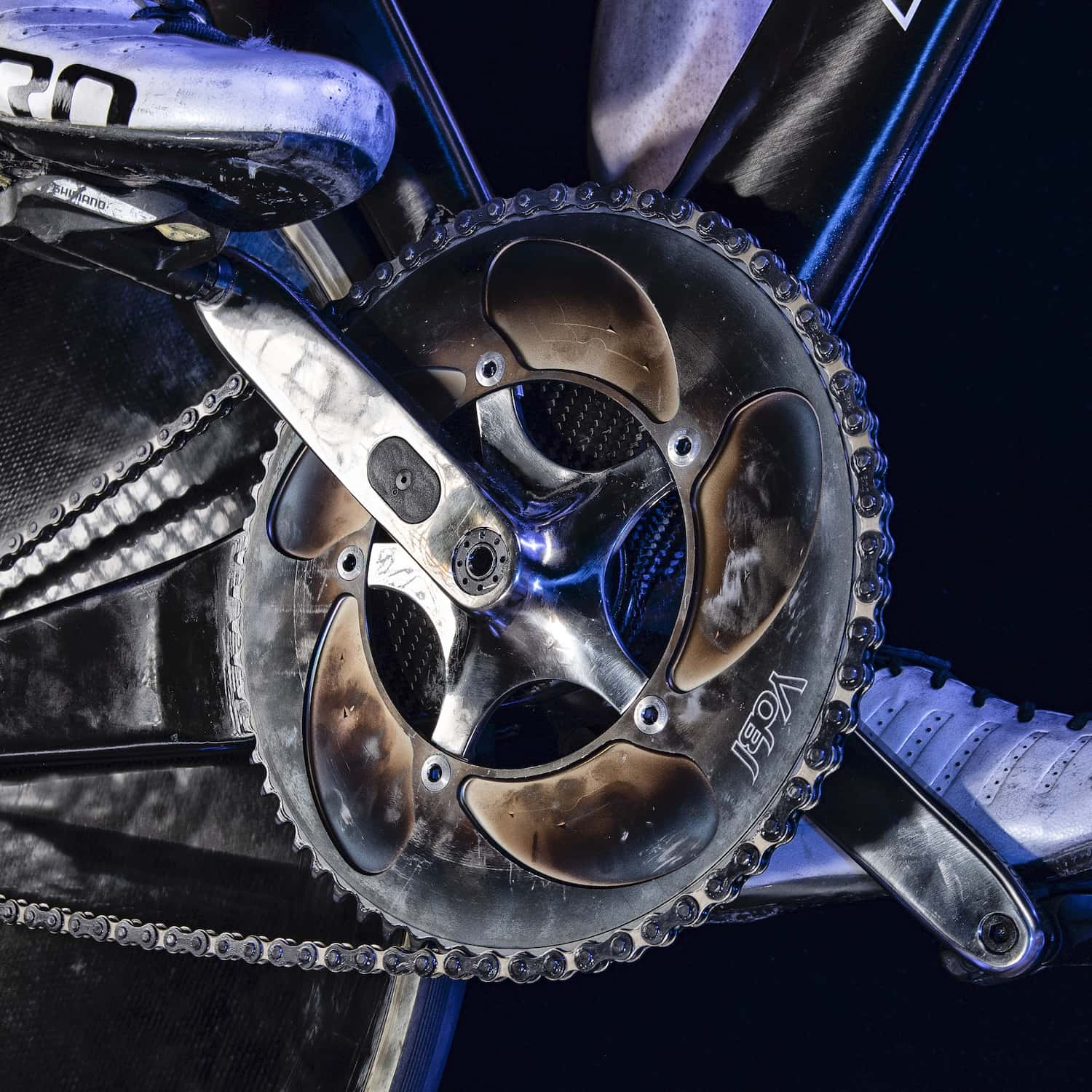Cycling power meter specialist Verve Cycling and engineering consultancy METRON Additive Engineering have launched what they claim is the “world’s first” commercially available 3D printed cycling power meter crankset.
The Infocrank power meter, which is fitted to a bicycle to measure the power output of the rider, has been in development for some time by Verve Cycling and last year underwent a revamp by means of additive manufacturing to deliver greater flexibility and customization to the component’s design.
Not only has the 3D printed power meter, named the Infocrank 3D Ti, become commercially available to consumers, but British Cycling is already using a track variant of the crankset to deliver significant advantages to its riders.
“Traditionally in manufacturing you can only design for areas that you can access – essentially the outside,” Verve Cycling CEO Bryan Taylor told CyclingTips. “However for cranks the ideal shape is a closed box with some internal structures and varying wall thickness.
“This is very difficult to achieve with traditional manufacturing as you generally can’t get to the inside faces. 3D printing means you can design exactly what you need.”
A lighter, more flexible crankset
Verve Cycling first launched the Infocrank power meter in 2014, which soon gained a reputation for accuracy and reliability. The component was one of the first cranksets to include a power meter in both left and right cranks to deliver true left-to-right power measurement, and according to Verve is the “most accurate” power meter currently available.
In 2016, the company teamed up with British Cycling to develop a track-specific version of the Infocrank, with reportedly around a third of Tokyo 2020 medallists using the crankset in training for the Games. However, despite the accuracy benefits of the power meter, its weighty design meant that the crankset was less popular on the road.
Last year, Verve Cycling partnered with Metron Additive Engineering to re-engineer the crankset using 3D printing in order to reduce the component’s weight and improve its customization. Dimitris Katsanis, Founder and CEO of METRON, had previously worked with the likes of British Cycling, INEOS, and Pinarello to design and 3D print optimized cycling components and equipment.
The new Infocrank 3D Ti crankset integrates the power meter into a new 3D printed titanium crank arm to provide a lighter and stiffer component. The 3D printing process also offers greater flexibility in terms of design, both for achieving the optimal shape of a power meter crank and in customizing the crank’s length according to each rider’s preference.
According to Parsons, 3D printing enabled the team to produce cranks with complex geometries that cannot be replicated by traditional manufacturing methods while still maintaining the ISO standard for crank fatigue tests.
While the companies are vague on the details of the 3D printing technology used to fabricate the power meter crankset, the process is described as: “Ti6Al4V titanium is melted by a high power electron beam under high vacuum conditions, at a facility that is aerospace qualified.”
While British Cycling athletes are already reaping the benefits of the new Infocrank 3D Ti in training, a road variant is due to be released later this Spring. In the meantime, Verve Cycling is offering MTB and BMX compatible Infocrank 3D Ti power meters to consumers, although at a fairly hefty price tag of around the £4,000-£5,000 mark.

How 3D printing is aiding elite cycling
With additive manufacturing able to provide greater customization, alongside significant time and weight savings, to cycling equipment and accessories, more and more athletes and national teams are looking to the technology to bolster their performance.
British Cycling is no stranger to 3D printing, having previously worked with global engineering firm Renishaw, Lotus Engineering, and bicycle engineering firm Hope technology to design a new track bike for the Great Britain Cycling Team in lead up to the Tokyo 2020 Olympics.
Also in lead up to the Games, the French Cycling Federation leveraged 3D printing to fabricate customized handlebars for its bikes in order to enhance aerodynamic efficiency, while the Italian national cycling team sought to improve its athletes’ aerodynamics using a Calibry 3D scanner from Thor3D.
Elsewhere, additive manufacturing has also been utilized to fabricate customizable hard-shelled carbon cycle shoes with superior biomechanical performance, and bespoke cycling helmets by means of augmented reality (AR).

Subscribe to the 3D Printing Industry newsletter for the latest news in additive manufacturing. You can also stay connected by following us on Twitter and liking us on Facebook.
Looking for a career in additive manufacturing? Visit 3D Printing Jobs for a selection of roles in the industry.
Subscribe to our YouTube channel for the latest 3D printing video shorts, reviews and webinar replays.
Featured image shows the 3D printed Infocrank 3D Ti. Photo via Verve Cycling.



